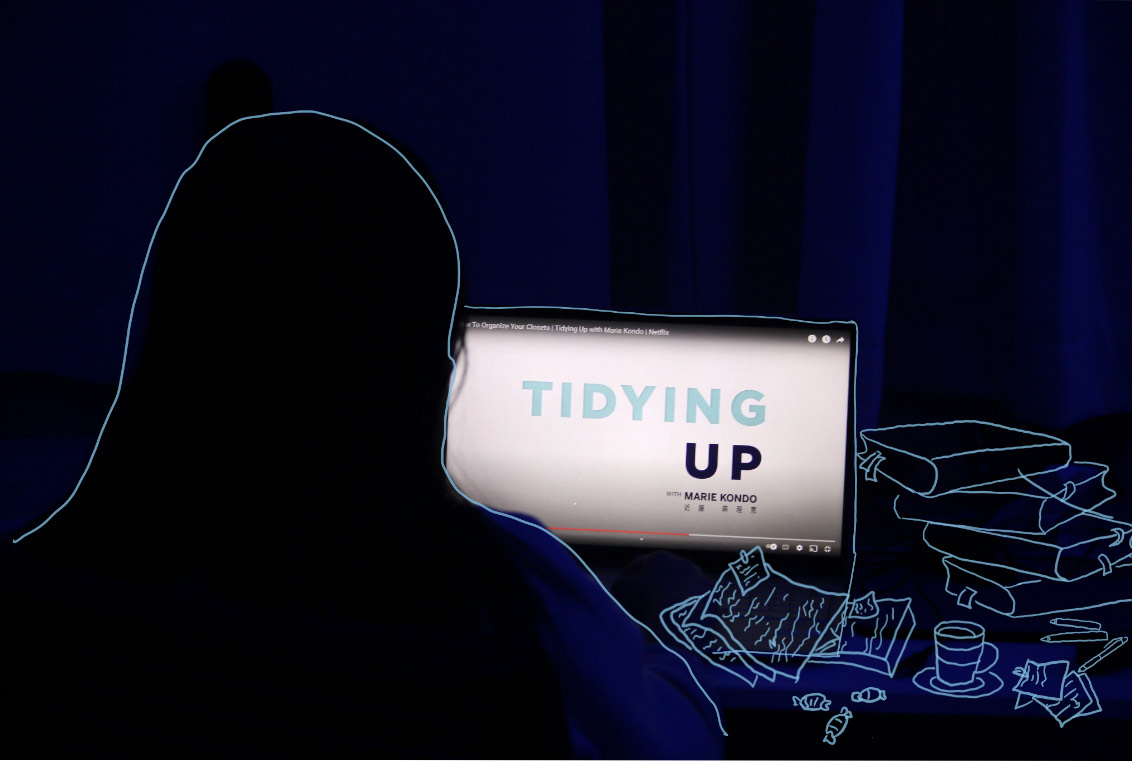“Does this spark joy?”
I paused the YouTube video to look at the pile of clothes in front of me, a stack of faded clothes my grandma had gifted me. During the summer of my sophomore year, I developed a strange obsession with Marie Kondo, an internet cleaning expert who promoted minimalism and maintaining a tidy life. Her advice for decluttering one’s room is summarized by her catchphrase, “Does this spark joy?” — essentially, she recommends throwing away anything that doesn’t “spark joy” in order to identify items that are actually necessary in your everyday life.
I’ve always loved watching this type of deep-cleaning video where Marie Kondo or someone like her takes an extremely messy house and transforms it into a minimalist, clean home. But while I was obsessed with this vision, I could never seem to bring myself to actually clean my room. After watching one of those transformation videos, I would be motivated for about five minutes to completely transform my room. However, after the initial excitement wore off, I would look around my room — the floor littered with clothes, the table swallowed by past homework assignments and the closet drowning in piles of miscellaneous trinkets — and my motivation would evaporate.
It wasn’t that I didn’t want to clean my room. I definitely wanted to stop tripping over camera batteries when I woke up in the middle of the night to drink water. But the task always seemed so unachievable I would just give up after trying for a few minutes and go back to watching those room transformation videos.
As I continued watching, however, I realized that those videos had given me a false sense of what improvement actually looks like. Seeing such a big transformation in a mere fifteen minutes had molded my perception of what progress was supposed to be — complete, or none at all. And so, when I couldn’t picture myself at the finish line, I would drop out of the race within my first few steps. I wouldn’t even try to pick up the clothes on my floor because instead of viewing progress as milestones, I was simply focused on completing the whole process. I was only looking at the final product — the bigger picture — and seeing a marathon staring back made it too daunting to even start.
Think about it like this: the goal of pursuing happiness is to reach a point in life when you no longer have to actively aspire to be happy. Similarly, the goal of self-improvement is to reach the point where you no longer think about constantly improving. So, by only measuring the success of my self-improvement by my results, I was actually defeating the purpose of trying to improve.
Slowly, I started to think about my progress in small steps instead of only as a percentage of the whole process. I decided to implement good cleaning habits into my everyday routine, so I would be doing a little bit of cleaning my room as a part of my schedule rather than having to actively think about it. Even after I was exhausted after coming home late, I made an effort to put my clothes in my laundry bin instead of throwing them on the floor. During my study breaks, I brought my dishes to the sink and threw away my trash instead of pushing it off to the side. To actually improve in cleaning my room, I did the exact opposite: I stopped trying to improve. Instead of cleaning for the end goal of attaining a spotless room, I incorporated these small tasks into my daily routine and simply made it a habit.
My room right now definitely wouldn’t fit on any Pinterest minimalist room boards. My El Estoque hoodie and various other shirts hang on the back of my chair instead of in my closet. I never make my bed, and the stack of faded clothes my grandma gave me sits in my drawer. Every day, I still struggle with cleaning my room. I’m still learning and improving on how to view progress as just that: progress.
But, without a doubt, my room definitely sparks joy.










